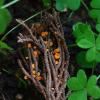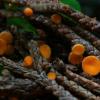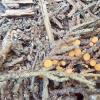
10-12-2022 17:00
 Stephen Martin Mifsud
Stephen Martin Mifsud
Long time no see my tiny cute friend! On Cupressus

07-12-2022 20:44
 Bernard Declercq
Bernard Declercq
Hello,hereby another problematic coelomycete, this

03-12-2022 16:11
 Bernard Declercq
Bernard Declercq
Hi there,Collected in Belgium on twigs of Cytisus

13-09-2013 21:09
Hello, Does anybody can give me a key of the genu

05-12-2022 10:43
 Bernard CLESSE
Bernard CLESSE
Bonjour à toutes et tous,Un ami m'a envoyé ces p

03-12-2022 00:10
Przemyslaw DrzewieckiMochle, Poland - 18.10.2022; Several ascomata on

01-12-2022 12:53
Patrice TANCHAUDBonjour, récolte réalisée sur un pin brûlé,

01-12-2022 23:50
Przemyslaw Drzewiecki30.11.2022; Mochle near Bydgoszcz, Poland. Old hor
Pithya cupressina
Stephen Martin Mifsud,
10-12-2022 17:00
 Long time no see my tiny cute friend! On Cupressus sempervirens, Malta.
Long time no see my tiny cute friend! On Cupressus sempervirens, Malta.
Przemyslaw Drzewiecki,
10-12-2022 19:43
Re : Pithya cupressina
Hallo, congratulations on your find. :-)
I found them once near my house. They are fantastic. :-)
https://www.kp.org.pl/pdf/pp/pdf2/PP_nr%202-2017__n_2_Drzewiecki.pdf
I found them once near my house. They are fantastic. :-)
https://www.kp.org.pl/pdf/pp/pdf2/PP_nr%202-2017__n_2_Drzewiecki.pdf



